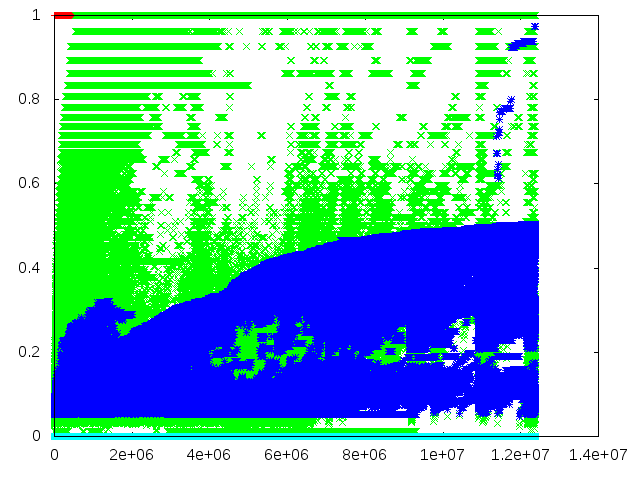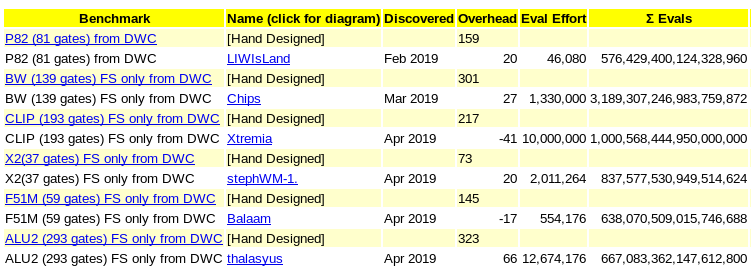
Project brief (Pb) is a segment of the Gridcoin Fireside where I will be talking about scientific projects apart of the BOINC network.
Now this isn't an explanation of how convolutional neural networks are far more effective for processing visual media when dealing with AI, it's a simple and super fun experience in learning about what's out there and what you could be supporting with just the click of a button!
Join me live with Jringo on the Gridcoin Fireside at July 11th 8:00pm EDT! (Check your timezone)
Who am I?
I'm Delta! An Australian programmer, technologist, blockchain and cryptocurrency expert, and self-proclaimed physicist.
I like to communicate things to people in the simplest way possible and teach people about the most interesting things that this universe has to offer.
You can find me on Discord where I hang out in the Gridcoin chat.
What's happening this Fireside?
On July 11th I will be opening the Fireside with a short explanation of the BOINC project DHEP.
At least once in your life you've probably been to a hospital or seen people hooked up to those pulse monitors and all the fancy medical gear, and you probably wouldn't want that to fail, right? - This is exactly what this project does, helps make electronics that fix themselves (yes, like the starship enterprise).
What is DHEP?

DHEP stands for "Distributed Hardware Evolution Protocol" and is a BOINC project that basically gets computers to make better computers.
Now don't be scared, this is totally safe and no AI or Skynet will result from this. What's actually happening is this project is improving upon existing computer circuits so that, even under the most extreme circumstances, they do not fail.

To understand computers, we have to go straight to the basics, 1's and 0's. Above is an image of what are called logic gates, and they manipulate the 1's and 0's in your computer. (try it out yourself!)
- AND means A and B must be true for the output to be true
- OR means either A or B (or both) must be true for the output to be true
- XOR means either A or B (but not both) must be true for a true output
- NOT means change a 1 to a 0 or vice versa
And you can connect these in different arangements to do different things, like below...

The above image is an example of what's called a digital logic circuit, and this is what DHEP deals with. This circuit will add one bit to another bit, and you would connect these together in a chain to add bigger and bigger numbers.
DHEP shuffles around these gates to create more and more complex circuits that try and do a better job in addition to preventing errors.

What comes with each circuit is a strand of DNA (like the image above). This is how your computer knows what circuit it is looking at. With this DNA, your computer can interact with another person's computer running DHEP and splice the DNA together, supposedly making a better circuit.
This is what is called genetics and it's what defines our reproduction as human beings.

On their site, they have a live map of all the currently running circuits (islands as they call them). Each island has its own DNA and competes with its neighbours to improve itself.
And so in the end, after enough trial and error, you will eventually get a pretty good result, right?

In most cases, yes, so many possibilities go by and so many genes are spliced that you get a very good circuit that does the job well. Like above, you see the effectiveness curve (blue) and how it starts approaching 1 (maximum effectiveness).
In other cases the genes might get stuck at a point where they aren't very effective and there isn't enough diversity of the genes to make any real impact on all their effectiveness. So the total effectiveness stays at the same level. In this case, usually the simulations are reset and everyone tries again from scratch.

DHEP Has made some pretty significant achievements, as you can see, they have improved a lot of conventional solutions to everyday digital logic circuits making them way more efficient than the human-made solutions. (the lower the "overhead" value, the better)
And so soon we might be able to have a life where we can trust technology to work 100% of the time in the most critical situations, and allow humanity to do what it does best - live, be curious and explore!
Interested in helping humanity make better circuits?
Don't have a good computer or want to donate your spare time?
Join Zooniverse, a site for volunteer science!
Solve puzzles and complete tasks that help real scientists solve real problems!
=p